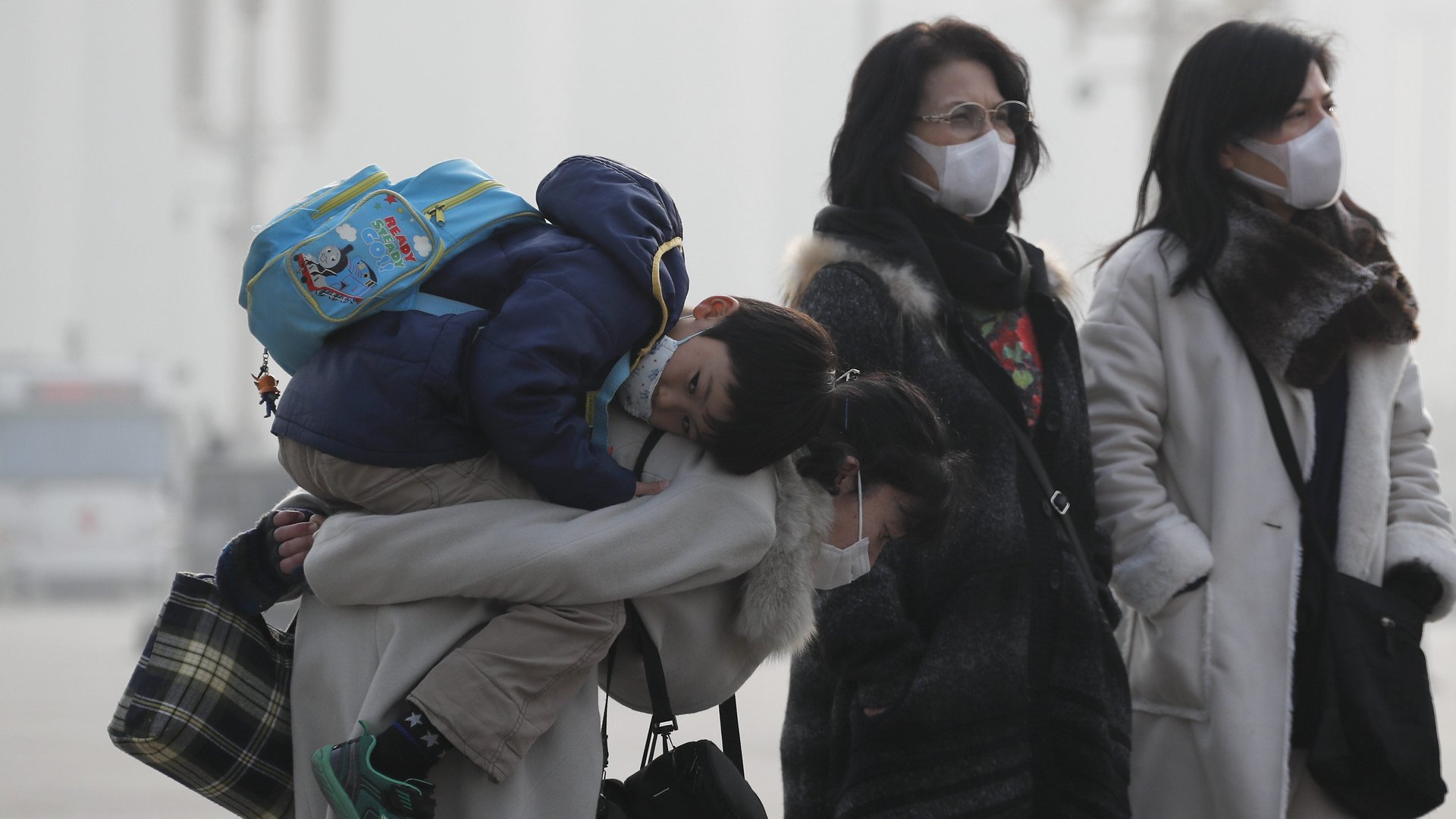Beijing is playing down its pollution problem
For a week now, the people of China’s capital city have been living under a toxic shroud of smog. Just yesterday (Jan. 4), dozens of flights were canceled, seven highways were closed, and the whole city was painted in unusual Instagram-like colors.


For a week now, the people of China’s capital city have been living under a toxic shroud of smog. Just yesterday (Jan. 4), dozens of flights were canceled, seven highways were closed, and the whole city was painted in unusual Instagram-like colors.
On Dec. 30, the city of Beijing was put under an orange smog alert, the second-highest warning level issued for smog pollution. The initial government prediction was that the smog would go away on the New Year’s Eve. But things didn’t go as planned, and after the new year began, Beijing announced it was maintaining the same warning level until Jan. 4. Again, things did not go as expected, and so Beijing extended the same warning again—now, officials say, things should get better by Jan. 7 (links in Chinese).
But the current pollution level already qualifies for a red alert—the highest warning. A red alert, according to official standards (link in Chinese), should be issued when the air quality index (AQI) is over 200 for four consecutive days, among which two days are above 300. (A red alert should also be issued if AQI reaches 500 on a single day.) Even an AQI above 100 is considered unhealthy.
According to both the US Department of State Air Quality Monitoring Program, and official government numbers, Beijing definitely qualifies for a red alert.
It’s not just semantics. There are real public health consequences of avoiding issuing a red alert: under an orange alert, primary and middle schools are advised to suspend classes, while it is compulsory under a red alert.
Instead of issuing a red alert this week, Beijing on Jan. 3 issued its first-ever (link in Chinese) red “fog” alert, to note that visibility in some areas is less than 50 meters.
Questions from the public began rolling in, but Beijing has its excuses.
“It would be more steady and organized to lay out emergency actions for a consecutive orange alert,” said Yu Jianhua, the chief engineer at the Beijing Environmental Bureau, explaining the government’s first decision to maintain the warning level. Meanwhile, the Ministry of Environmental Protection told Reuters it hadn’t yet issued a red alert due to ”discrepancies” in smog forecasts for different parts of Beijing.
As of 5pm local time on Jan. 5, the AQI in Beijing was at 256 according to the @BeijingAir Twitter account, which puts out data from the US Department of State Air Quality Monitoring Program’s Mission China: